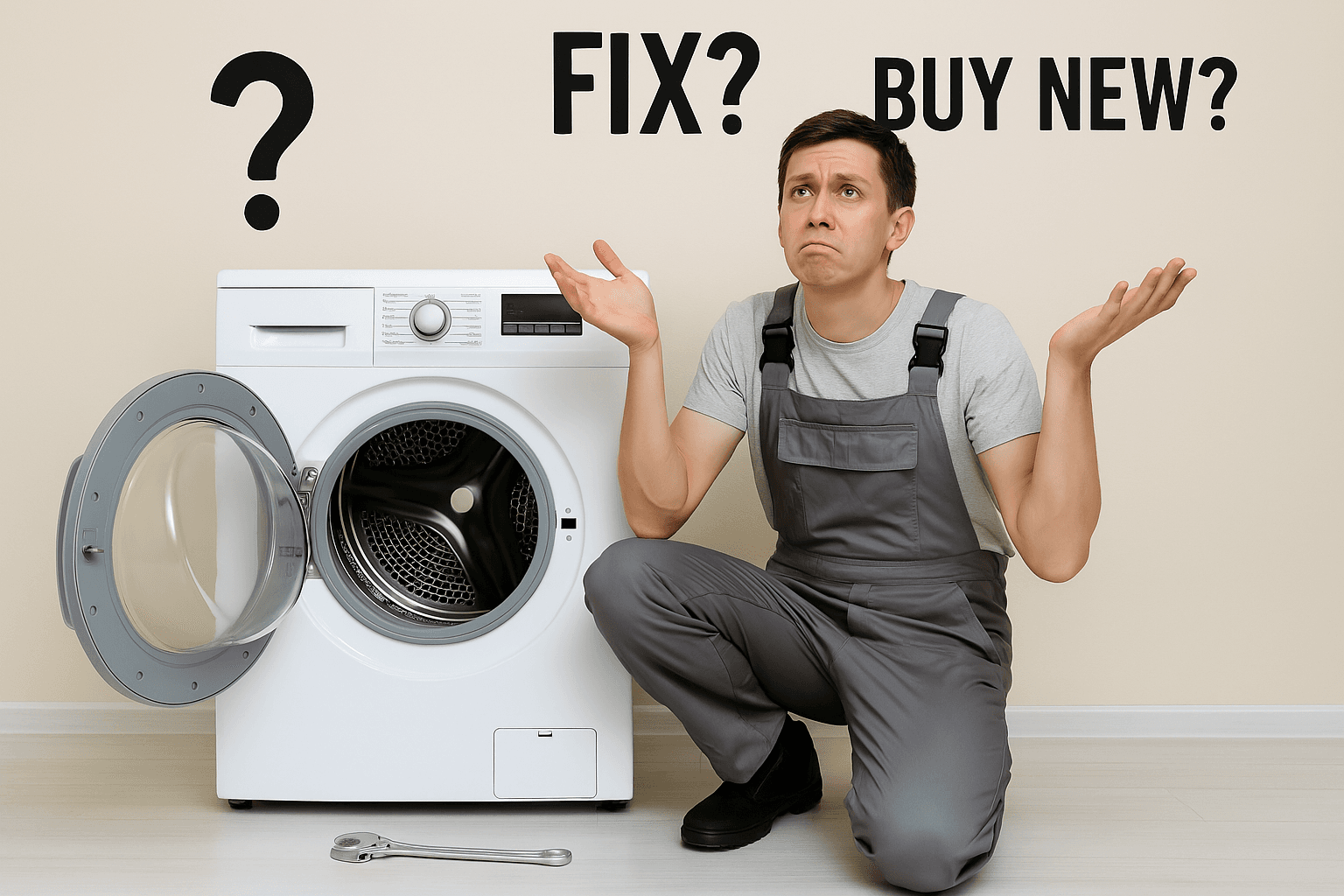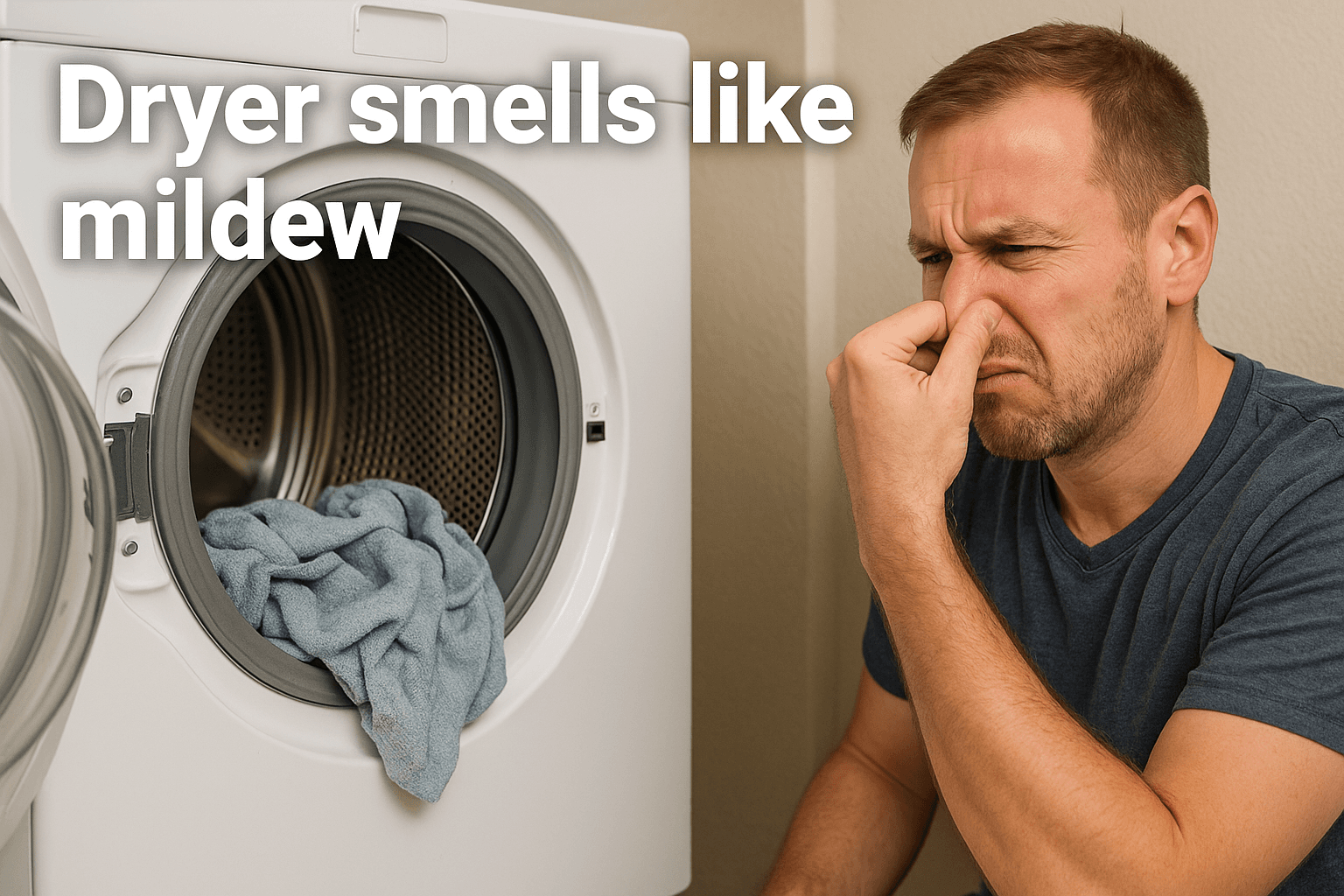Review
Is It Worth Repairing a Dryer or Should You Replace It?
AZparts Team
Updated on July 30, 2025
8 min read
Is it worth repairing a dryer? This is a common question for many households when their appliance starts showing signs of wear or malfunction. A clothes dryer plays a vital role in daily life by saving time and effort in laundry care. But like all electronic devices, dryers can develop problems over time. In this article, AZParts will guide you through the key factors to consider when deciding whether to repair your dryer or replace it with a new one, helping you make the most cost-effective and practical choice.

1. Factors to Consider: Is It Worth Repairing a Dryer?
1.1. Warranty status
The first factor you should check is the warranty status of your dryer. If the appliance is still under the manufacturer’s warranty, the repair process will be much simpler and more cost-effective. Many manufacturers offer long-term warranties sometimes up to 5–10 years, for components like the motor or circuit board. If your machine is still within the warranty period, contact the service center for a free or low-cost inspection and repair.
1.2. Identify the problem
Before deciding to repair, it's essential to accurately identify the problem. Minor issues such as the dryer not heating, making unusual noises, or having trouble with the door latch are often easy and inexpensive to fix.
However, if the machine has more serious problems like failing to spin, power loss, burning smells, or electrical leakage, you’ll need to evaluate it more carefully. These could indicate deeper internal damage, leading to higher repair costs and a greater risk of recurring issues. It's best to have a technician inspect and diagnose the problem before making a final decision.
Before deciding to repair, it's essential to accurately identify the problem (Source: Freepik)
1.3. Compare Repair Costs vs. Replacement
A commonly used rule of thumb is: if the repair cost exceeds 50% of the price of a new dryer, it’s more reasonable to invest in a new appliance. You should also get quotes from at least two or three reputable repair centers to get a clearer picture. In addition to repair costs, consider other factors like wait times, transportation fees, and the risk of future breakdowns after repair.
Moreover, if you decide to go ahead with repairs and are looking for a reliable source of replacement parts, check out the dryer parts available at AZParts. This is a trusted provider of high-quality, genuine dryer components such as belts, motors, and thermal sensors. Choosing the right parts not only saves you money but also ensures your dryer operates efficiently after the repair.
1.4. Think about what you like in your current dryer
Before deciding to replace your dryer, take a moment to consider what you still appreciate about it. If your current machine is operating reliably, user-friendly, fits well within your living space, and meets your laundry capacity needs, there may be no urgent reason to switch. Many users also favor their older models for their energy efficiency or quiet performance.
If these advantages continue to serve your daily routine effectively, opting for a repair could be a more economical and environmentally responsible choice, as it extends the lifespan of your appliance and reduces electronic waste.
1.5. Evaluate dryer age and efficiency
Most dryers have a typical lifespan of 8 to 12 years, depending on their quality and maintenance. If your machine is over a decade old and experiencing frequent breakdowns, it’s likely reaching the end of its service life.
Furthermore, newer models on the market offer enhanced features such as energy-efficient drying cycles, steam sterilization, anti-wrinkle technology, and quieter operation. Upgrading to a modern appliance can lead to long-term savings on electricity and provide a more convenient and enjoyable user experience.
It’s important to consider the age and overall condition of your dryer (Source: Freepik)
Ultimately, deciding whether to repair or replace your dryer involves weighing several factors - warranty coverage, the severity of the issue, repair costs, the appliance’s age, and your overall satisfaction with its performance. If your dryer is still relatively new, only has minor faults, and remains under warranty, repairing it is often the most cost-effective and practical option. However, if it’s an older machine with major issues or if the repair costs are too high, investing in a new dryer may be the smarter, more future-proof decision.
2. Most Common Dryer Issues and How to Fix
Understanding the most common dryer issues can help you detect problems early, take appropriate action, or seek professional repair services in a timely manner.
2.1. Dryer Doesn’t Produce Heat
This is one of the most frequent issues users face. It typically results from a faulty heating element, a malfunctioning temperature sensor, or an unstable power supply. When there is no heat, the drum may still spin, but clothes come out damp after the drying cycle.
To fix this problem, you should check the power supply and examine components like the dryer heating element, thermostat, and thermal fuse. Then replacing any damaged parts will usually restore the dryer's heating function.
Read more: What is a Dryer Thermal Fuse? How Does It Work?
Dryer doesn’t produce heat is one of the most common dryer issues (Source: AZParts)
2.2. Drum Doesn’t Spin
If the drum isn’t rotating, clothes may clump together, leading to uneven drying or excessive wrinkling. Common causes include a broken drive belt, a burnt-out motor, or worn bearings or clutch components.
To resolve this, check if the drive belt is intact and properly aligned. If the belt is fine, inspect the motor and internal parts for damage and replace any worn components as needed.
2.3. Loud Noises During Operation
Unusual or loud noises may indicate that a foreign object is stuck inside the machine, the drum shaft is misaligned, or internal parts like the bearings or blower fan have worn out over time.
To address this, check for any loose items inside the drum and inspect the moving parts for wear or misalignment. Replacing damaged components can help restore quiet, smooth operation.
2.4. Dryer Won’t Start or Shuts Off Unexpectedly
If the dryer fails to start or shuts off mid-cycle, it may be due to a faulty control board, a broken door switch, or unstable electrical voltage. These issues should be properly diagnosed by a qualified technician.
To fix this issue, make sure the power supply is stable and inspect the door switch for proper contact. If the problem persists, a technician should examine internal electronics for faults.
Dryer Won’t Start or Shuts Off Unexpectedly (Source: Freepik)
2.5. Burning Smell or Smoke
A burning odor or visible smoke is a serious warning sign. It may indicate an electrical short, burnt wiring, or the machine being overloaded. In such cases, turn off the dryer immediately and stop using it to prevent potential fire hazards.
To ensure safety, turn off the machine immediately and unplug it. Avoid using the dryer until a professional has inspected and resolved the issue.
2.6. Clothes Remain Damp or Smell Musty
If your clothes are still damp or have an unpleasant odor after drying, it’s often due to a clogged lint filter or blocked vent hose, which restricts proper airflow. Regular cleaning and maintenance are essential to keep the dryer functioning efficiently.
To remedy this, clean the lint filter after every cycle and check the vent system regularly. Good maintenance ensures effective drying and prevents moisture buildup.
Clothes Remain Damp or Smell Musty (Source: AZParts)
3. DIY or Call a Pro Technician?
When your clothes dryer breaks down, it’s common to wonder whether you should attempt the repair yourself or call in a professional technician. If you have basic knowledge and a good understanding of how the machine works, handling simple issues like replacing a drive belt, cleaning the lint filter, or changing an indicator light can be done on your own with the help of detailed instructions. Doing it yourself can save time and money.
However, for more complex problems such as motor failure, electronic control board malfunctions, or any issues involving electrical components, DIY repairs can be risky. Attempting to fix these without proper expertise might lead to further damage or pose safety hazards.
In these situations, hiring a professional technician is the safer and more efficient choice. Experienced repair specialists have the right tools and know-how to accurately diagnose the problem and carry out lasting repairs, ensuring your dryer continues to operate reliably.
DIY for simple fixes, call a pro for complex issues (Source: AZParts)
Ultimately, whether to repair or replace your dryer depends on more than just the cost. Factors like the machine’s current condition, age, performance, and extent of damage all play a role. Careful consideration can help you save both money and time, while also ensuring your appliance continues to serve you well. If your dryer is still under warranty or the problem is minor, repair is a sensible option. On the other hand, if repair costs are too high or the machine is outdated, investing in a new dryer will likely provide better performance and long-term value.
If you need to replace parts for your dryer, check out genuine dryer parts such as heating element, thermostat, thermal fuse, door switch, drive belt,… from AZParts - your trusted source for high-quality components that ensure safe and effective repairs.
Contact information:
- 8 The Green, Ste A, Dover, Delaware 19901-3618, United States
- support@azparts.com
Check out more:
2. How to Clean a Dryer Vent Properly (Step-by-Step Guide)
3. How to Install Dryer Vent Hose with 6 Simple Steps
Dryer
Further Reading
Further Reading





